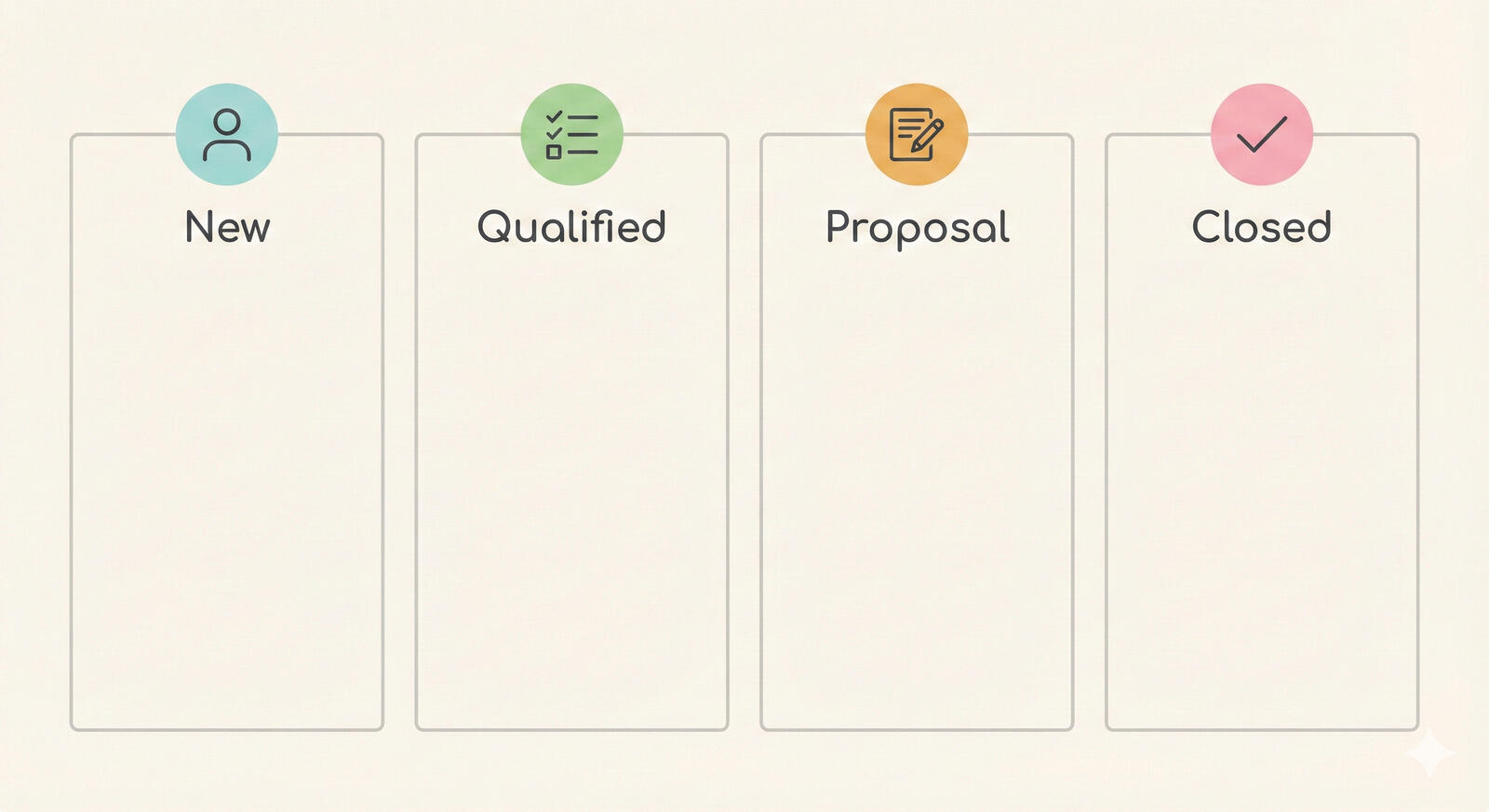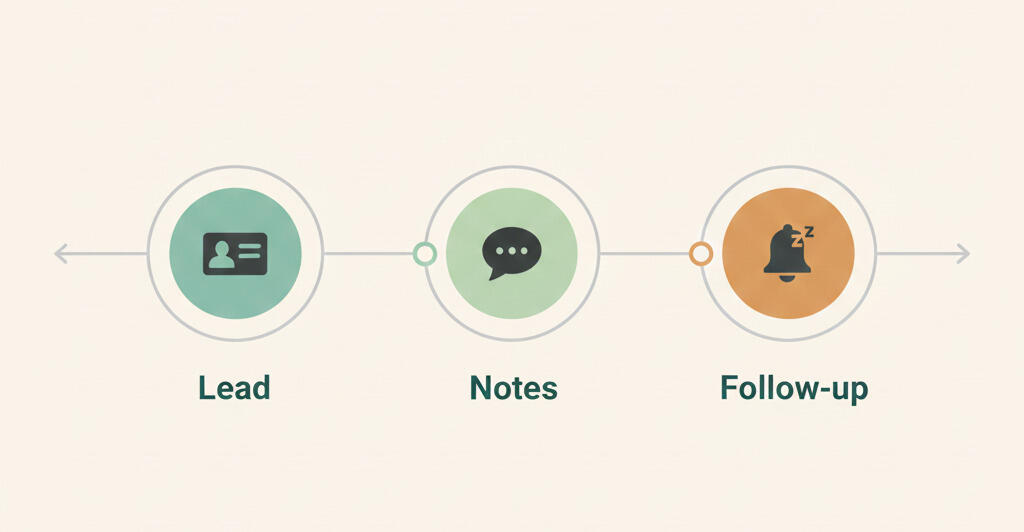How to Manage Team Workload
There are always too many tasks and not enough people.
Now, doesn’t that sound familiar?
If you’re working in any kind of team, you’ve likely struggled with workload and work overload. Sometimes this is because you’ve got an important project, but you don’t have enough time to organize it properly.
Numerous teams and entrepreneurs shrug and say: “That’s just the price you pay for ambition.”
We beg to differ.
In this article, we’ll show you how to manage team workload to improve your productivity and retain your team’s sanity.
Let’s take a look!
What Is Team Workload Management?
According to a Gallup study, the vast majority of employees are or have been burned out.
You know the feeling... Suddenly, every task becomes much harder, no matter how simple it seemed when you jotted it down. You’re juggling ten to-do lists, multitasking, and it still seems like you’re never going to make it on time.
There is too much to get done, and not enough time and people to do it.
This is where team workload management comes in.
It helps you manage tasks, and distribute them across your team so everything gets done, and your team members stay productive instead of developing the early symptoms of the burnout syndrome.
Team workload management provides the best results when you have a structured process you and your team can follow.
The Benefits of Team Workload Management
The number one benefit is certainly productivity.
If you can efficiently organize tasks and assign them to relevant team members, you’ll get a lot more done.
Teams that use workload management processes know:
- What they need to do at any given point
- Who they should hand off the results to
- Where they are in the process
Productivity can’t exist without transparency, and therein lies the brilliance of team workload management. Everyone knows exactly what’s happening.
If you’re a manager, you’ll also understand if you’re progressing as planned.
The second benefit of team workload management is quality improvement.
If you’ve got a team that’s badly burned out, they won’t create high-quality results. They’ll just focus on staying afloat.
However, if your team isn’t inundated with tasks, and they can focus on every task with the dedication it demands, you’ll see your quality scores rise rapidly.
Finally, team workload management improves employee satisfaction.
As the number one driver behind successful employee retention, employee satisfaction and job engagement are crucial to sustaining a team you can rely on.
However, if you’re constantly putting more tasks on your team’s plate than they can handle, they’ll be quick to jump ship.
For all of these reasons and more, it’s the prime time to help your team manage their work better!
How to Manage Team Workload
Fortunately, there are plenty of strategies you can use to improve your productivity:
1. Understand Your Team, Your Demands, and Your Abilities
In order to create an effective workload management process, you should first understand:
- What your team members are like
- How much work your team members can handle
- What tasks and projects you have to take care of
- The specifics of your tasks and projects (including deadlines, scope, budget, resources, etc.)
This first step is going to show you areas for improvement, and help you understand your workload capacity.
For example, if you don’t have enough resources for all the projects on your plate, you will immediately see that you need to dial down your portfolio.
2. Divide and Conquer
When you’ve listed all your projects, you should break them down into actionable tasks and items.
For this, you can use the Work Breakdown Structure:
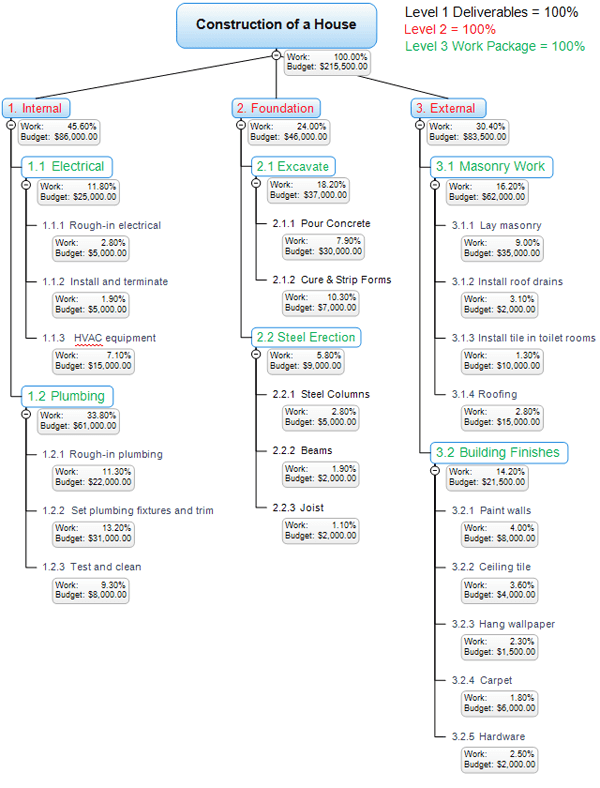
This is a WBS example for the construction of a house.
In it, the bigger tasks are broken into sub-tasks (e.g. internal work turns into electrical and plumbing work, which is then further broken down into the smallest portions of work), allowing you to gain a better understanding of the necessary resources.
You can assign tasks to particular team members, just to get an understanding of who is shouldering the most work.
Then, consider whether you can further delegate those tasks to make sure no individual team member is overly inundated with work.
Finally, if you’ve got a lot of (interdependent) tasks on your plate, you’ll have to prioritize.
3. The Art of Prioritization
If you’ve got a lot of tasks, start organizing them with the Critical Path method:

This method has been used by engineering teams to manage their workload for a long time, and for a very good reason.
The Critical Path method will help you define the most important tasks needed to finish your project, and chart a course for the most time-effective way to completion.
You can also assess the urgency and importance of tasks with the Eisenhower matrix:

If your team’s tasks are...
- Urgent and important - Take care of them first
- Urgent but not important - Take care of them second
- Important but not urgent - Add them to your to-do list and plan for their completion, or delegate
- Not important and not urgent - Eliminate
The main prerequisite is that you have a complete list of all your tasks, broken down with the WBS.
Know your business priorities.
When teams work at large corporations, it’s easy to lose track of overall business goals and schedule workload accordingly.
However, if you’re working at a smaller business, then the direction is present. You know what your company wants to achieve. And that can help with productivity a lot; 89% of American employees feel that they waste time at work, lacking direction.
When you know what your company’s goals are, you should make sure you complete the tasks that will contribute to those goals first.
Of course, keep both short-term and long-term goals in mind. Ideally, they should work together, and contribute to the overarching goal.
Use the Schultz hour.
Give your team an hour every week to set their own workload priorities. This gives them a much higher degree of autonomy, ensuring that they remain on your team, happy and productive.
You can use the Schultz hour (which can also be 15 minutes at the beginning of each day - especially if your project priorities change constantly) for both workload, personal, and professional goals.
It can be a great way of motivating your employees while ensuring that you’re keeping your productivity levels up!
Review priorities constantly.
Priorities change, especially if you’re dealing with a lot of projects, or projects where the results are flexible by nature and not accurately defined from the very start.
Hold meetings where you and your stakeholders (team members, and even clients if necessary) discuss current progress and review your priorities.
This way, you’ll keep steering the ship in the right direction.
4. Help Your Team Organize Their Workload
There are two types of team workloads you have to keep in mind:
- Your general, project-oriented workload
- Individual team members’ workloads
Not every person on your team excels at time management.
If you’re the one in charge, they could use your guidance.
First of all, you should make the tasks clear enough to be able to plan resources and identify team members who will be responsible for them.
Secondly, you should cooperate with your team members to create schedules that work for them.
Keep in mind that yes, projects mandate a certain deadline, but your team members are people who need rest to be productive and produce high-quality results.
If necessary, negotiate a longer timeline in the beginning, or add buffers to your schedule so you don’t run out of time.
Keep your team members’ skills in mind.
Make sure that you’re giving tasks to team members who are the best fit for the job. If they’re not the best fit but you’ve had to compromise because the best person can’t take on any more tasks, you can have them consult.
Again, priorities matter here.
Make sure your top priorities go to the best-fit team members.
Keep it visual.
In order for your team members to understand their tasks and progress, you’re going to have to prepare visual materials.
Sometimes, it’s enough to use a whiteboard with a timeline representing your progress and task dependencies.
However, in the majority of cases, it’s best to use project management tools like Breeze.pm.
Say no to multitasking.
The main goal of prioritization is to ensure your team members know which tasks they should focus on first.
However, we often resort to multitasking in hopes of achieving more, especially when we’re dealing with overloads in team environments.
Unfortunately, multitasking hinders productivity.
Use a simple Kanban board that divides tasks into three columns (done, doing, to-do) and keep your team members focused on the most important tasks at hand.
It’s the best way to ensure everything gets done, and gets done the way clients want it.
5. Use Team Workload Management Tools
Today, it’s impossible to imagine functioning as a team without some type of project or task management software.
Breeze makes the best of both worlds - task and project management:

Breeze usesKanban-style boards to help you and your team members understand their workload. Tasks are divided into four columns:
- Ideas / Backlog
- To-do
- Doing
- Done
You can assign every task to specific team members, as well as set deadlines, priorities, and label tasks according to your preferences.
If you’re managing multiple projects at once, you can understand your progress with a single click:

You’ll see your status immediately; from deadlines to completion rates.
This is incredibly helpful when it comes to managing resources.
If you know how much work your team members are handling, you’ll be able to make sure they’re not taking on unimportant tasks or biting off more than they can chew.
Breeze will help your team members collaborate efficiently:

On average, workers spend 2.5 hours every single day searching for information they need to complete their work.
But when your team members see everything they need within a single app, they won’t waste time.
They will get things done.
In Breeze, every task gets a separate card. You can add all the details, as well as collaborate with your team members:
- Task assignments
- Time tracking
- Tags & filters
- File attachments
- Statuses
- Calendars
- Discussions
Even if you encounter a roadblock, this level of collaboration will help your team overcome them and come out sharper.
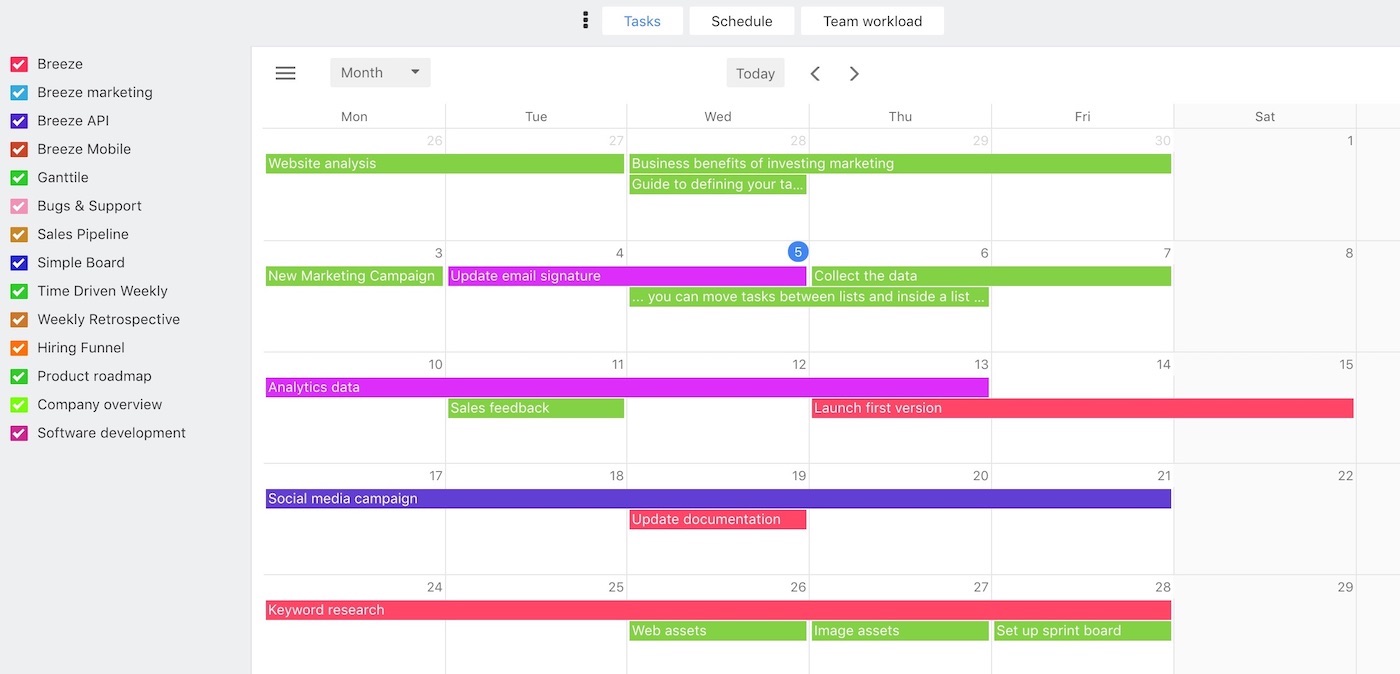
There’s nothing like visual representation of work flows and workloads to help your team stay on the same page.
Breeze displays:
- Task calendars
- Schedule charts
- Team workload visualizations
Wondering who’s taking on too much and who seems to be fading into the background?
You don’t have to wonder anymore.
Breeze will show you everything you need to know to manage your team’s workload efficiently.
Finally, if you have to report to higher-ups and clients, or you simply want to make sure you’re constantly improving, you’ll find the performance data you need inBreeze:
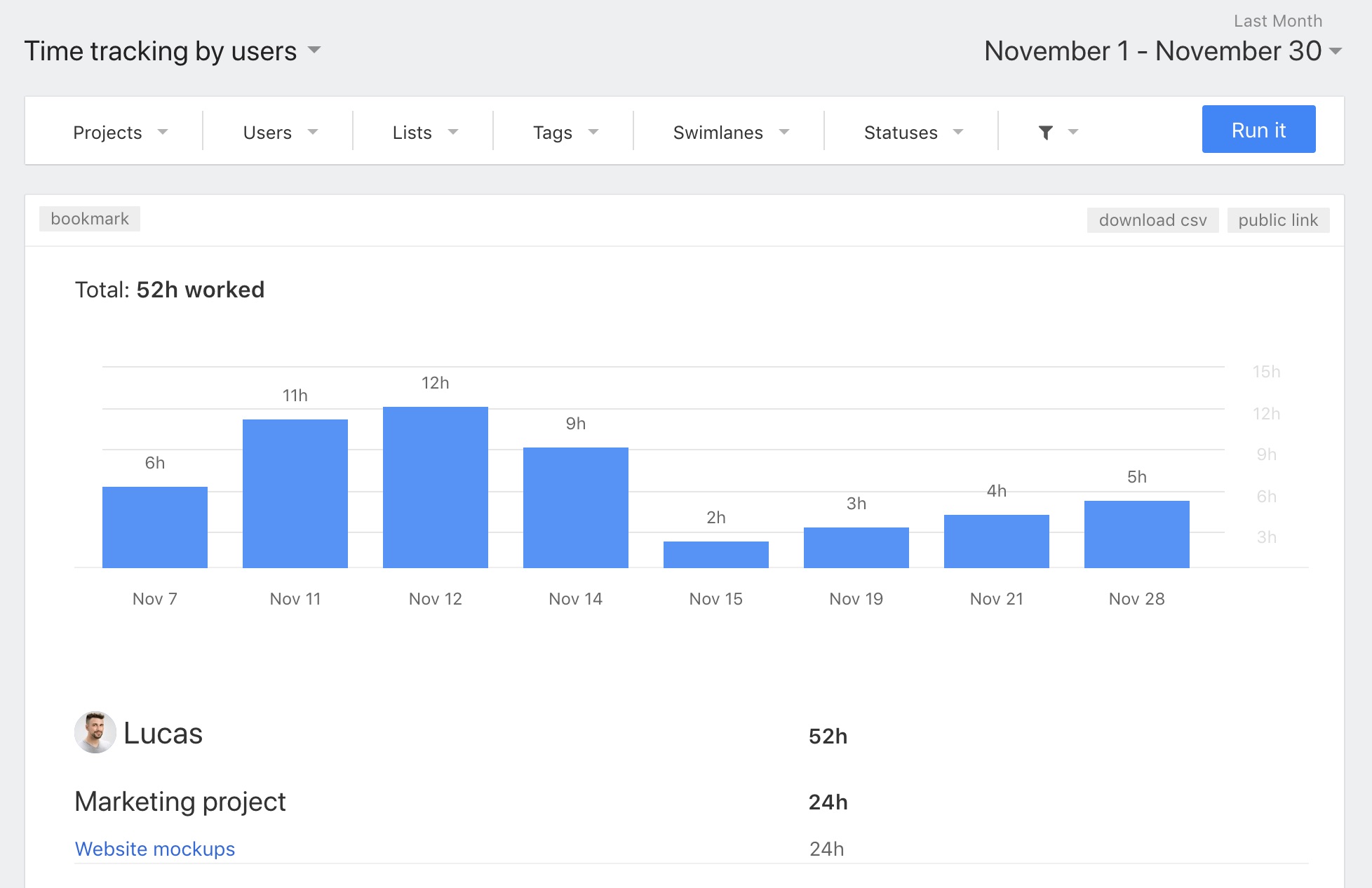
Are You Ready to Improve Your Team’s Productivity?
At the end of the day, the success of your projects and your company depends on your team members.
Manage their workloads more efficiently, and you’ll meet all your deadlines in time.
Ready for it?


